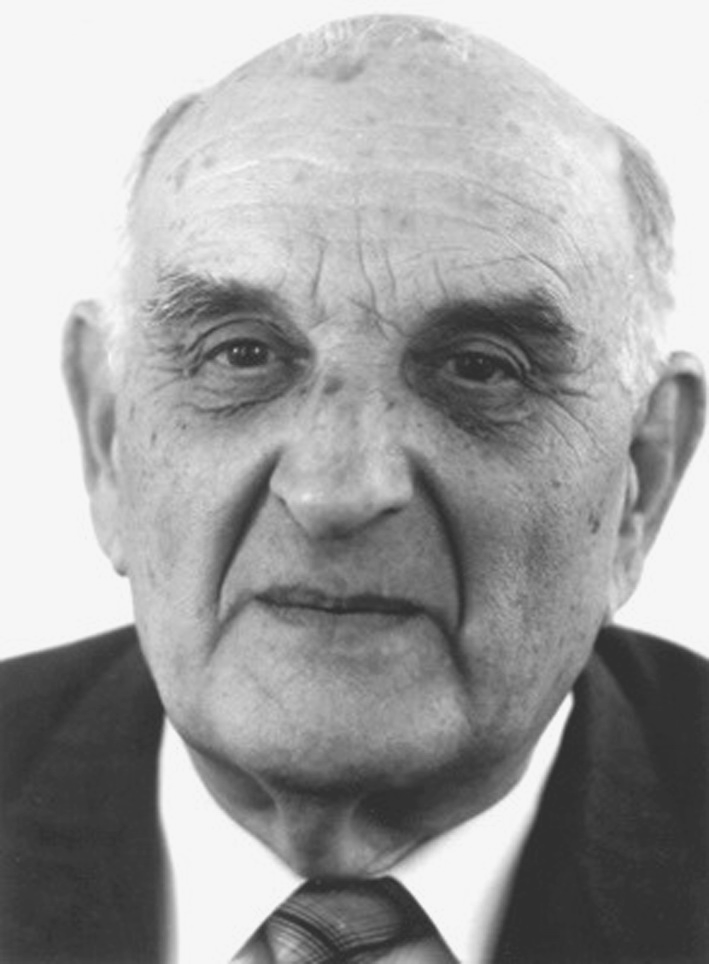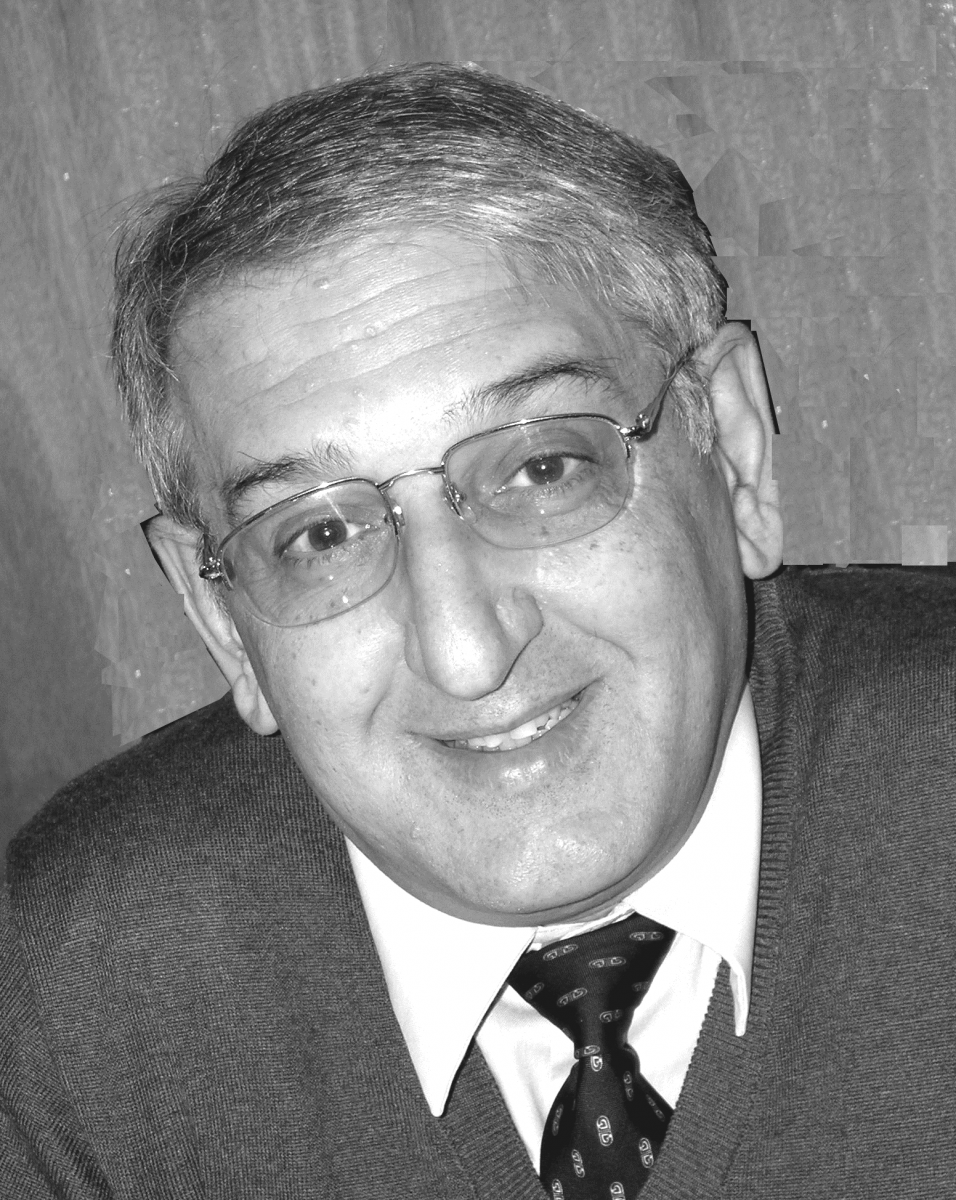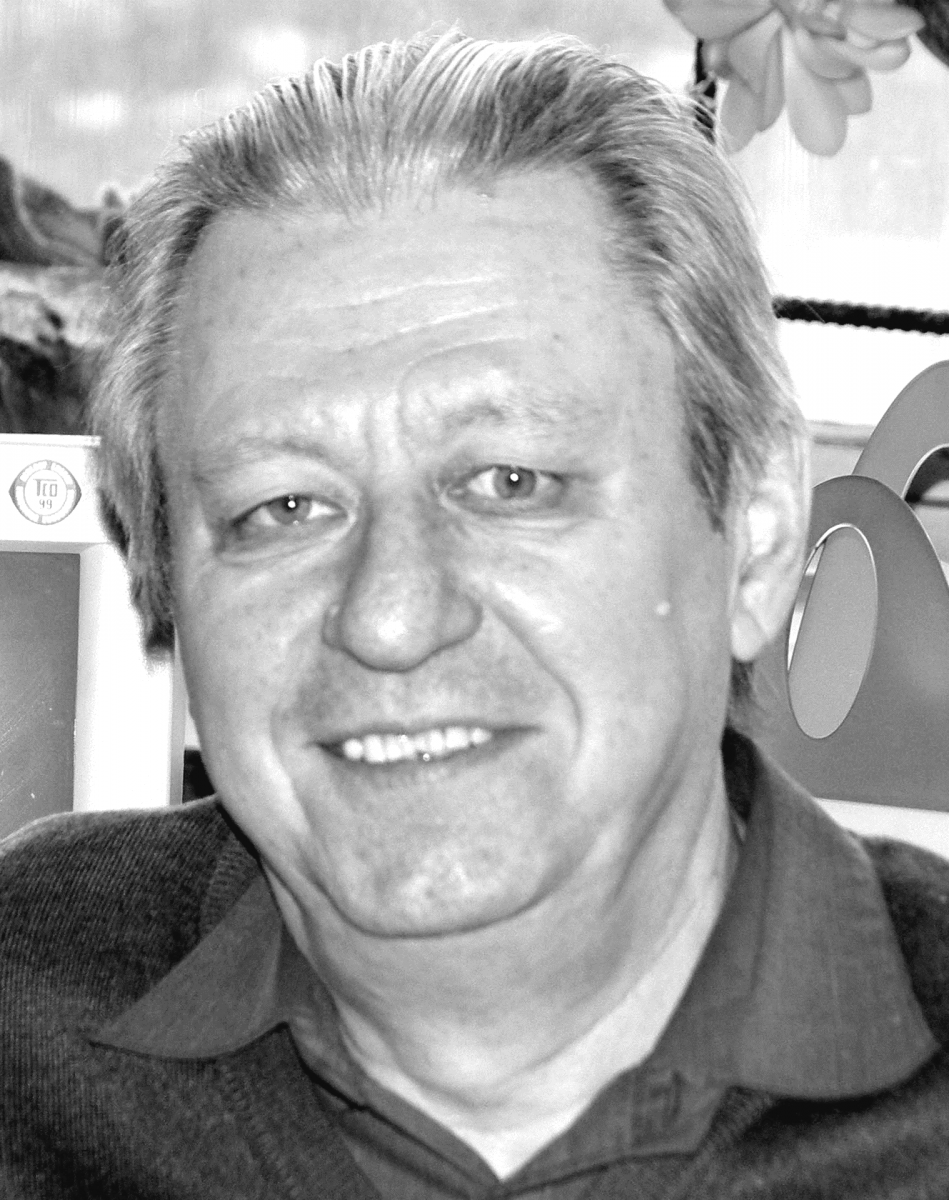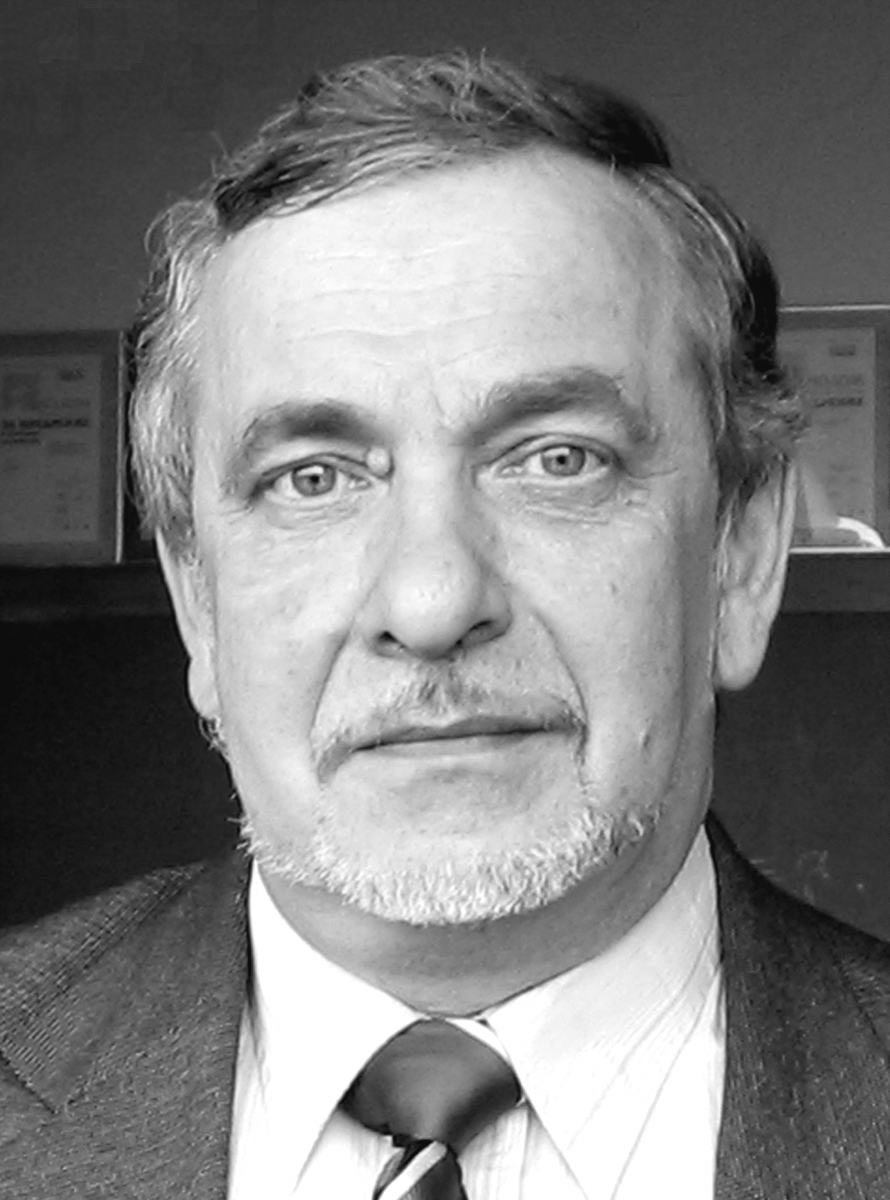CHOICE THEORY AND DECISION ANALYSIS
Named after M.A. Aizerman
 |
|
Mark A. Aizerman, Founder and first Head of Laboratory No. 25 |
In 1962, Laboratory No. 11 (Pneumohydraulic Automation) of the Institute continued developing automata theory and started research on bionics. A strong group of experts was formed to work in those areas. As a result, Laboratory No. 25 (Theory and Methods of Automata Design) was organized by the order of the Institute’s Director, Acad. V.A. Trapeznikov on December 25, 1962. An outstanding scientist, Dr. Sci. (Eng.), Prof. Mark A. Aizerman (1913–1992), headed the Laboratory from the establishment till 1991.
During that period, the Laboratory led by M.A. Aizerman studied stability theory, automata theory, graph theory, control in medicine and biology, and choice theory and decision analysis. (The latter two areas were dominating the others.) Laboratory’s results significantly contributed to the science of control and management. Laboratory’s research in control theory, stability theory, image recognition, data analysis, finite automata theory, theory of multi-agent systems, graph theory, mathematical logic, medical cybernetics, choice theory, and voting theory is included in the golden fund of world science. Outstanding scientists worked at the Laboratory since its establishment. M.A. Aizerman, E.M. Braverman and L.I. Rozonoer, united in joint research, were called “the mighty ABR trio.” Their classical results in machine learning were included in textbooks on image recognition worldwide. A.A. Dorofeyuk, N.V. Zavalishin, A.I. Litvintsev, A.V. Malishevsky, V.I. Chernov, and A.L. Chernyavsky came to the Laboratory while studying at Moscow Institute of Physics and Technology. Here they matured as scientists.
In 1964, E.S. Pyatnitskiy joined the Laboratory. In 1982, on Aizerman’s initiative, Laboratory No. 16 (Dynamics of Nonlinear Control Processes) was organized at the Institute. E.S. Pyatnitskiy had been its head until passing away.
In 1984, Sector No. 25.1 under Dr. Sci. (Eng.) Alexander A. Dorofeyuk was formed in the Laboratory. In 1988, on Aizerman’s initiative, the Sector was reorganized into Laboratory No. 55 (Processing of Large Data Arrays in Hierarchical Systems).
In 2015, a group under Dr. Sci. (Phys.–Math.) P.Yu. Chebotarev formed Laboratory No. 70 (Mathematical Methods of Multi-Agent Systems Analysis).
Laboratory No. 25 much contributed to training young employees for the Institute. Postgraduates from Estonia, Georgia, Armenia, Azerbaijan, and Uzbekistan studied and defended their dissertations here. Laboratory’s international contacts are widely known. In different years, young scientists from Italy, France, and the USA studied here as well. Laboratory’s former employees and postgraduates live and work in the USA, France, Canada, and Israel. Laboratory’s employees delivered lectures and worked in the world’s leading research centers. Currently, Laboratory’s employees are lecturers in Moscow Institute of Physics and Technology, the Higher School of Economics, and Lomonosov Moscow State University.
 |
|
Fuad T. Aleskerov, Head of Laboratory No. 25 |
For over 50 years of the history, Laboratory’s employees published about 100 monographs and over 1000 papers on various areas of control theory and applications. The Laboratory owns the certificates of authorship and patents for many R & D results.
For decades, Laboratory No. 25 has been organizing the famous all-Moscow seminar on problems of extending automata capabilities; for over 40 years, the seminar on expert evaluations and data analysis.
In 2001, it was renamed to the Laboratory of Choice Theory and Decision Analysis in honor of M.A. Aizerman. Since that time, Laboratory No. 25 has been headed by Prof., Dr. Sci. (Eng.) Fuad T. Aleskerov, Honorary Man of Science and Technology of the Russian Federation. In 2018, he was elected to the Computer Science Section of Academia Europaea.
In 2017, Laboratory No. 25 merged Laboratory No. 55, headed by Prof., Dr. Sci. (Eng.) Alexander A. Dorofeyuk), and Laboratory No. 44, headed by Prof., Dr. Sci. (Eng.) Alexander S. Mandel’.
Main research areas of Laboratory No. 25:
 |
|
Alexander A. Dorofeyuk |
 |
|
Alexander S. Mandel' |
1. New theoretical models of decision-making. Descriptive and axiomatic approaches to the aggregation of preferences and the formation of collective decisions. Formal structures, particularly those to choose and analyze decisions.
2. Models and methods for analyzing and forecasting voting outcomes in large and small groups. Models and computational methods for determining the degree of influence of group members on decision-making. Models for studying the influence of participants in network models.
3. New classes of centrality measures for networks considering node parameters, short- and long-range interactions (Long-Range Interactions Centrality, LRIC), and group influence of nodes.
4. Influence estimation models for financial networks (e.g., the market of international loans) considering the intensity of agents’ interactions.
5. Models for studying migration processes.
6. Multidimensional indices for studying polarization in political bodies.
7. Superposition models for tornado prediction.
8. The individual and coalition manipulability of well-known preference aggregation schemes.
9. Theory of expert-statistical control and identification systems. Expert-statistical and expert-classification decision support methods. Professional testing methods.
10. Production and inventory control methods under uncertainty. Forecasting methods under incomplete initial and current data.
11. Intellectual analysis methods for complexly organized data, including image recognition, and structural classification methods to study, model, and identify a wide class of control systems.
12. Structural forecasting methods for large-scale control systems.
13. Decision support methods for weakly formalized control and management systems, including theories of expertise, expert appraisals, and consulting.
14. Theory and methods of control and management for the interdisciplinary models of organizational, socio-economic, medical, and biological systems.
15. Models for biological systems.
16. New methods for processing medical information and obtaining new diagnosis signs.
Applied results of Laboratory No. 25:
-
The system for assessing the quality of regional living conditions and citizens’ satisfaction with the regional authorities
This computer system assesses the quality of regional living conditions, providing the regional authorities with the tools to produce and analyze up-to-date, reliable, and accurate information about the processes and results of the population activities to support socio-economic and infrastructure decisions on regional development. The system calculates predictive models to assess the population’s quality of life in municipalities, districts, cities, and entire regions.
Implementation: 17 regions and 7 cities of the Russian Federation and 2 cities abroad.
-
The system for assessing the potential increase in sales for a retail network
This computer system finds opportunities to increase sales on an existing set of customers, organize targeted promotion campaigns for goods and services, and personalize offers and the targeted pricing and discount policies.
Implementation: Metro AG (Germany).
-
The system for developing a branch network and assessing the significance of commercial clients and the operational efficiency of commercial banks
This computer system provides information on the operation of bank branches to the Board of Directors; supports decision-making on the opening of new bank branches on a local market; determines the relative efficiency and significance of clients for the bank.
Implementation: Large commercial banks in Turkey (Yapi Kredi) and Italy (UniCredit).
-
Methods for finding patterns among heterogeneous data
These methods find and identify patterns in large data arrays with possible inaccuracies. Some examples are innovative development data for territorial formations, banking sector data, macroeconomic indicators, and clinical data for morbidity estimation.
-
Forecasting of the oil spill on the sea surface
Implementation: oil spills modeling in the Barents Sea.
-
Analysis of disputed territories in the Arctic region
The mathematical model developed determines the countries’ interest in the zones depending on the remoteness and the availability of resources and distributes disputed territories to the satisfaction of all parties concerned. The model was presented in countries interested in the Arctic region (Russia, Canada, Sweden, Norway, the USA, and Finland).
-
Identification of key players in the food security market
The method developed analyzes trade relations between countries to identify the most significant players.
-
The hardware and software complex for early differential diagnosis and treatment management of central nervous system illnesses with movement disorders (Parkinson’s disease, essential tremor, spastic torticollis, and others)
This complex is intended for neurologists. It performs the differential diagnosis of diseases with similar symptoms, especially at the early stages when there are no clinical manifestations; monitors the patient’s condition in the course of treatment; assesses the effectiveness of different treatment forms (medication, surgery, electrostimulation, etc.); assesses the effect of pharmacotherapy on different symptoms in individual selection of medicines.
Implementation: The complex is used by leading clinics: the Research Center of Neurology, Russian Academy of Medical Sciences (the former Research Institute of Neurology, Moscow); the Russian Medical Academy of Continuous Professional Education (the Ministry of Health of the Russian Federation, Moscow); Chair of Neurology, Center for Extrapyramidal Diseases (the Ministry of Health of the Russian Federation, Moscow); Department of Neurology, Vladimirsky Moscow Regional Clinical Research Institute (MONIKI, the Moscow Region); the Republican Clinical Diagnostic Center for Extrapyramidal Pathology and Botulinum Therapy (Kazan). The complex is patented.
-
The method for detecting preclinical markers of human reaction to weak impacts of ionizing and non-ionizing radiations
This method detects preclinical reactions of the human central nervous system to various low-dose (low-power) exposures: radiation, SHF and EHF electromagnetic fields, ultrasound, computers with a wide range of radiation, and cellular phones. The method allows performing biological dosimetry, assessing the ecological state of the environment in various regions, and identifying risk groups among the people professionally connected with radiation.
Implementation: The method was used during dispensary examinations of the personnel of the Kalinin and Leningrad nuclear power plants.
The Laboratory’s current staff consists of 25 employees, including 2 Doctors and 14 Candidates of Sciences. Nowadays, Laboratory’s employees deliver lectures and present their papers at the world’s leading scientific institutions: Harvard University, Massachusetts Institute of Technology, California Institute of Technology, and Stanford University (the USA); University of Cambridge and Oxford University (the UK); Heidelberg University (Germany), Ghent University (Belgium), and Université Paris 1 Panthéon-Sorbonne (France). The Laboratory conducts joint research with Panthéon-Sorbonne, The University of Turku (Finland), Warwick University (the UK), Indian Statistical Institute (Delhi, India), The Arctic University of Norway (UiT, Norway), and many others.
The Laboratory has a young scientific school on individual, collective, and multicriteria choice models.
Theoretical and applied research results have been presented and highly appreciated at numerous international and all-Russian conferences.
